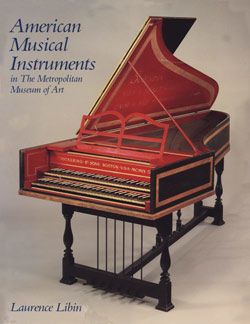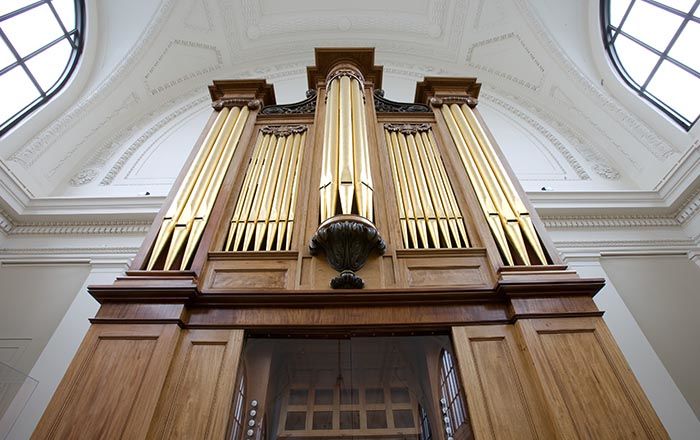Snare Drum
Not on view
Side drums were the most important instrument in the infantry of European armies and were commonly in use in the colonies of British North America beginning in the middle of the seventeenth century. Such drums were part of the "field music" along with fifes and used to provide cadences for marching armies as well as to signal all aspects of an infantry soldier's day from sounding a wake up alarm, to signaling meals, calling soldiers for drill practice, announcing mail call, and telling soliders when to go to bed. This drum was worn on a sling to the player’s side, hence its name. Snares, or cords, strung across the bottom head rattled when the drum was played and gave it a characteristic buzzing sound.
Technical description: Birchwood shell with reddish brown varnish. Brass tack design reinforcing glued shell overlap, consisting of two parallel, vertical lines of four tacks each. In between the two vertical lines is a circle consisting of six tacks around the vent hole that has bone bushing. Nails are also used to reinforce the shell. Rope tension. Originally nine leather tugs (three now missing). Wooden counter hoops painted red (faded to pink). Nails secure the rim overlaps. Nine drilled holes in each rim through which the rope passes. Brass snare adjuster mounted on snare head rim. A brass screw (now missing) mounted horizontally, perpendicular to the rim, pushed against the rim, forcing the mechanism clamping the snares away from the drum, to tighten the snares. Calfskin heads. Five gut snares held opposite the strainer by a leather strap. A single leather strap passes through a hole in the batter head rim that may have held the sticks when they were not in use. (Jayson Kerr Dobney 2003)
This image cannot be enlarged, viewed at full screen, or downloaded.


